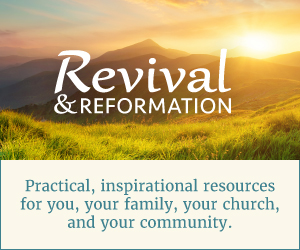Museum exhibit focuses on new evidence for King David
Collegedale, Tennessee, United States—King David—a poet, warrior, hero, the founder of a dynasty—is at the heart of Israel’s history and is mentioned more frequently than any other Bible figure. But did he exist and was his kingdom real? These questions have fueled a new debate in the last two decades among Bible scholars who question not only the existence of David but the extent of his kingdom in the tenth century b.c.
Recent archaeological discoveries in the Elah Valley have produced new evidence for David’s kingdom. The site of Khirbet Qeiyafa, identified as the city of Sha’arayim in the David and Goliath story, has been excavated since 2007. Over the last five years, the massively fortified garrison city has revealed new clues about the extent and power of the early kingdom of Judah, including the oldest Hebrew inscription ever found, which made the cover stories of the New York Times and National Geographic.
Southern Adventist University’s Institute of Archaeology, a senior partner in the project, invites you to the first museum exhibit focusing on these amazing discoveries dating back 3,000 years to the founding of the early kingdom of Judah. Witness firsthand The Battle Over David: Excavating the Fortress of Elah, featuring artifacts from the National Treasures Department of Israel and this important site for the first time.
Visit Southern Adventist University’s Lynn H. Wood Archaeological Museum and experience firsthand the world of David’s time. The exhibit will be open November 7, 2012, through April 2014. For more information, see http://southern.edu /archaeology or email museum@ southern.edu. [Michael Hasel]
Interim ADRA chief optimistic about agency’s future
Silver Spring, Maryland, United States—Robert Rawson, whose years of active service to the Seventh-day Adventist Church concluded with his retirement as General Conference treasurer in 2002, recently exchanged that idyllic image for a stint as interim president of the Adventist Development and Relief Agency (ADRA) International, and a return to the church’s world headquarters in Silver Spring, Maryland. Rawson was called in following the June 24 removal of then-president Rudi Maier and the initiation of a search for a new, permanent ADRA International leader.
Rawson, 75, expressed confidence in ADRA’s mission and noted a recent letter sent to the ADRA network of employees and cooperative agencies around the world: “We are absolutely confident about the ways in which God is leading ADRA International and our network. I can state with certainty my conviction that the ministry of ADRA is an important aspect of the work of the Seventh-day Adventist Church, and that God’s providence is guiding our footsteps in greater effectiveness.”
He also had high praise for the current headquarters workforce, and said he spends time speaking with each of ADRA International’s employees to get a sense of their backgrounds, interests, and concerns. “We have a tremendously talented staff,” Rawson said, acknowledging that there had been substantial staff reductions at the ADRA International headquarters in the past 18 months. Meeting with one staffer every half hour, he said, is designed to open a channel of communication. He said, “Our employees are our greatest asset, and that needs to be realized. Confidence is what I’m trying to reestablish, and let everyone understand that I believe sincerely in that personal commitment.”
What comes through in these one-on-one interviews is the sense of commitment to ADRA that all these employees still have, he added. “There is so much good potential here,” Rawson said of the headquarters staff. “I mean, we have outstanding talent and young, committed people who want to learn and want to be mentored, and appreciate the openness and frankness to express that, and that they’re able to communicate and talk.”
Though not charged with creating a new vision for ADRA International (Rawson said he would leave that for the incoming, permanent president), he said his task was to prepare the staff for that transition. “I saw my role, and was affirmed in that through the board chairman and through everyone I visited in administration, that what I feel my role here is, if I can prepare this staff, get them through the challenges that they are experiencing. And [second] become a positive force ready to [go] when a new [leader] comes on board, then I will have felt I will have succeeded in my task,” he said.
Rawson said a key challenge is not only to keep the grants “pipeline” filled with aid projects but also to be able to fulfill the requirements of those grants. ADRA International, like many overseas charitable agencies, often works with the U.S. Agency for International Development and other funders to equip its field offices to help those in need. “If we write grants and don’t have the capacity to administer them, that’s the other issue,” Rawson said. “So we have to have the capacity to write [grant applications], we have to have the capacity to manage it out of our offices, and we have to have the capacity on the other end to actually do the hands-on [work]. This is very complex. But the biggest issue with his organization is not theory. The biggest issue is management, keeping all the parts working together in unity. We’re making great progress in that regard.”
[Adventist Review/Mark Kellner]















